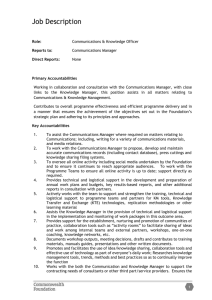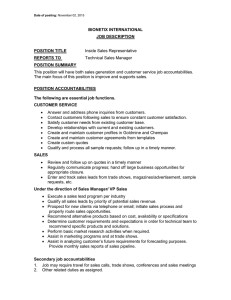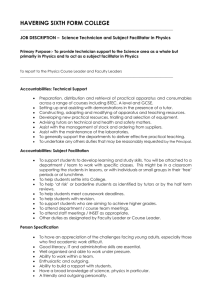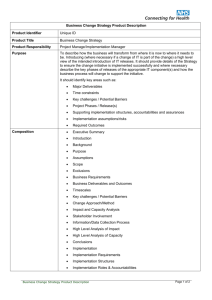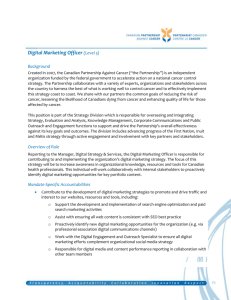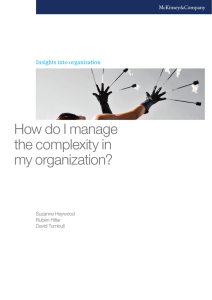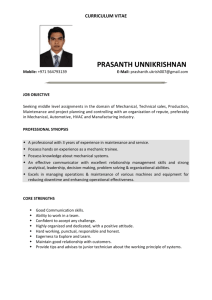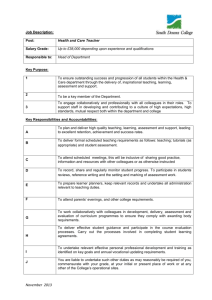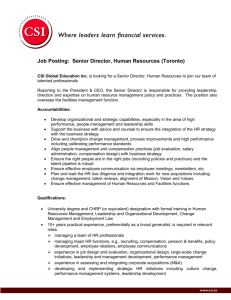Guidelines for writing a Job Description
advertisement
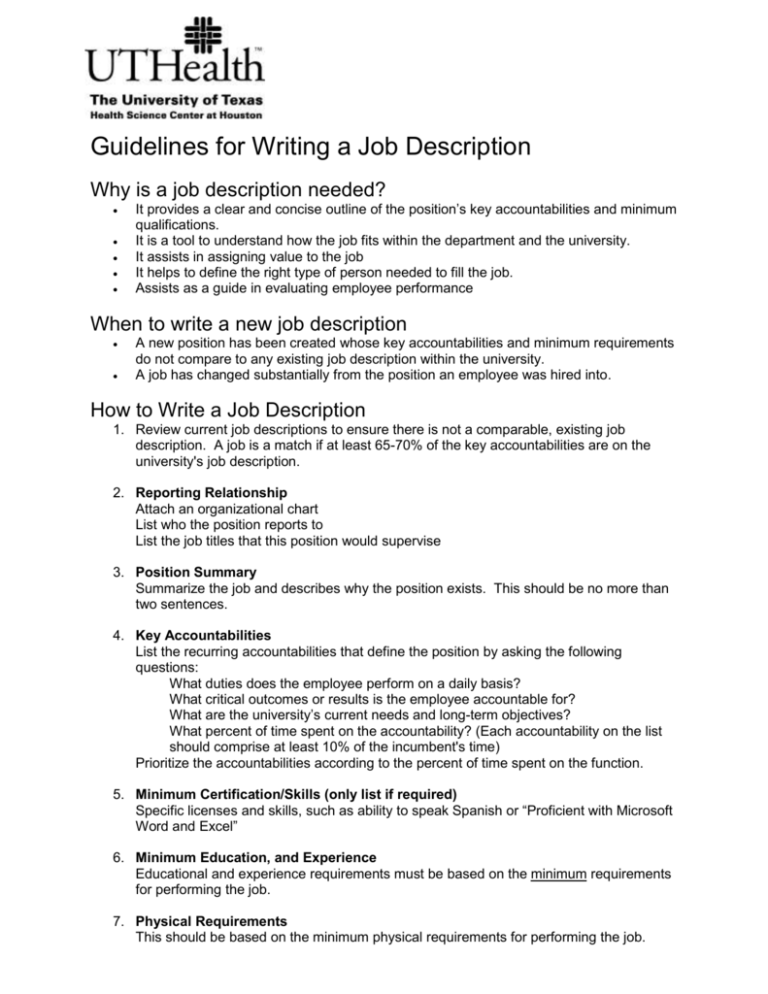
Guidelines for Writing a Job Description Why is a job description needed? It provides a clear and concise outline of the position’s key accountabilities and minimum qualifications. It is a tool to understand how the job fits within the department and the university. It assists in assigning value to the job It helps to define the right type of person needed to fill the job. Assists as a guide in evaluating employee performance When to write a new job description A new position has been created whose key accountabilities and minimum requirements do not compare to any existing job description within the university. A job has changed substantially from the position an employee was hired into. How to Write a Job Description 1. Review current job descriptions to ensure there is not a comparable, existing job description. A job is a match if at least 65-70% of the key accountabilities are on the university's job description. 2. Reporting Relationship Attach an organizational chart List who the position reports to List the job titles that this position would supervise 3. Position Summary Summarize the job and describes why the position exists. This should be no more than two sentences. 4. Key Accountabilities List the recurring accountabilities that define the position by asking the following questions: What duties does the employee perform on a daily basis? What critical outcomes or results is the employee accountable for? What are the university’s current needs and long-term objectives? What percent of time spent on the accountability? (Each accountability on the list should comprise at least 10% of the incumbent's time) Prioritize the accountabilities according to the percent of time spent on the function. 5. Minimum Certification/Skills (only list if required) Specific licenses and skills, such as ability to speak Spanish or “Proficient with Microsoft Word and Excel” 6. Minimum Education, and Experience Educational and experience requirements must be based on the minimum requirements for performing the job. 7. Physical Requirements This should be based on the minimum physical requirements for performing the job. Next Steps 1. Send the draft job description for review to your DMO or school administrator. 2. The DMO or administrator will forward the draft job description to HR Compensation Request (HRCR). 3. Compensation will contact you to clarify if any questions arise, and will review and grade the job. Tips 1. Keep the job description generic. Each department can tailor a specific job description for use internally within their department by describing the unique characteristics of their job. 2. Describe current duties as they exist now, not as they may be performed in the future. 3. Define acronyms to assist in the review and evaluation. 4. Be specific on skills requirements. Consider why the skill is important and state it plainly. Use "Ability to clearly present technical concepts to a non-technical business audience"; or “Ability to communicate technical information to non-technical audiences” rather than "strong communication skills". 5. The job must be truly doable. When combining several tasks into the same job description, ensure you’re not creating a job few people could accomplish. 6. For clarity, use explanatory phrases that tell how, why, where, or how often. Use "Distributes all questionnaires to develop a comprehensive database of feedback from customers." instead of "Distributes questionnaires”. 7. A job description is a legal document. Any reference to race, color, religion, sex, sexual orientation, national origin, age, disability or veteran status is illegal.
